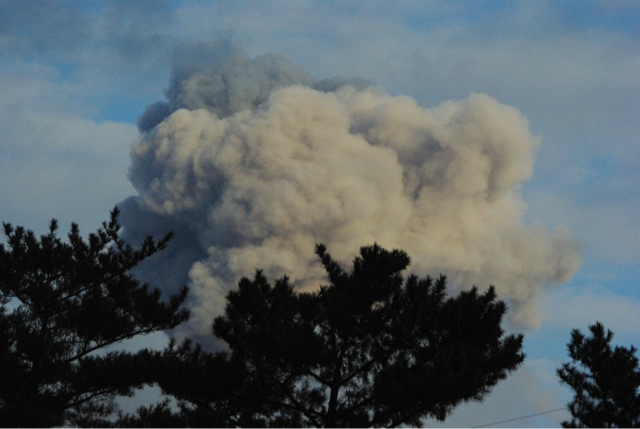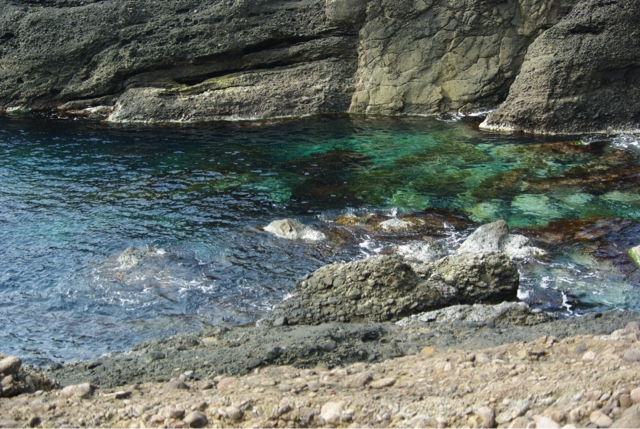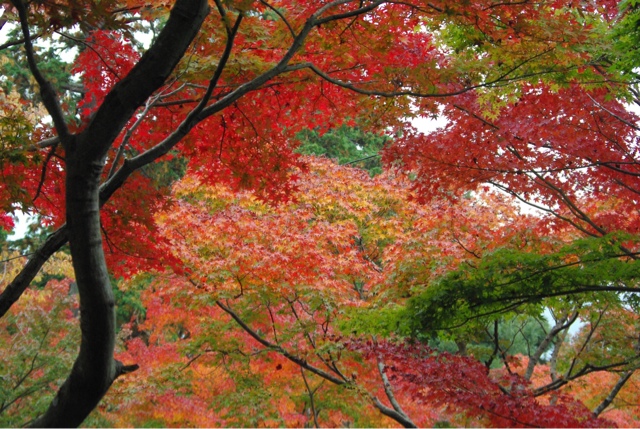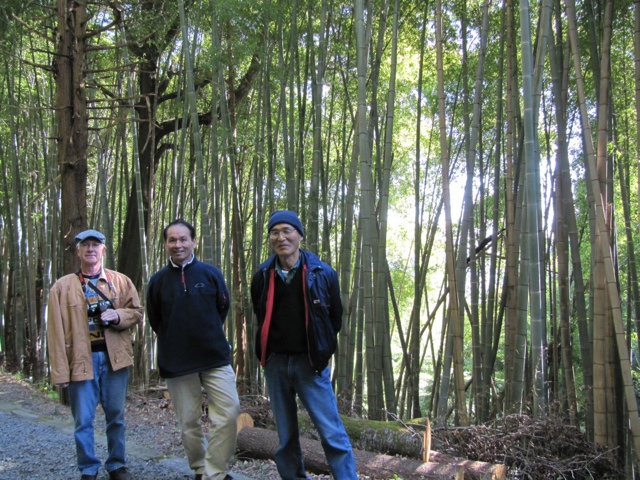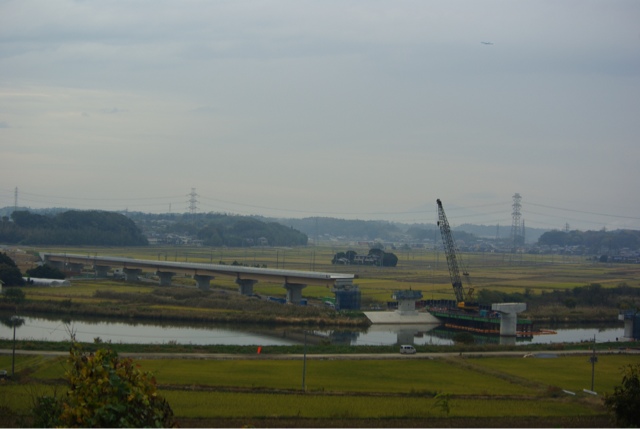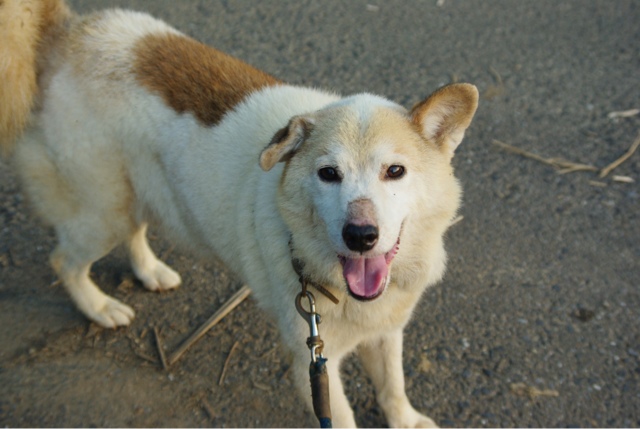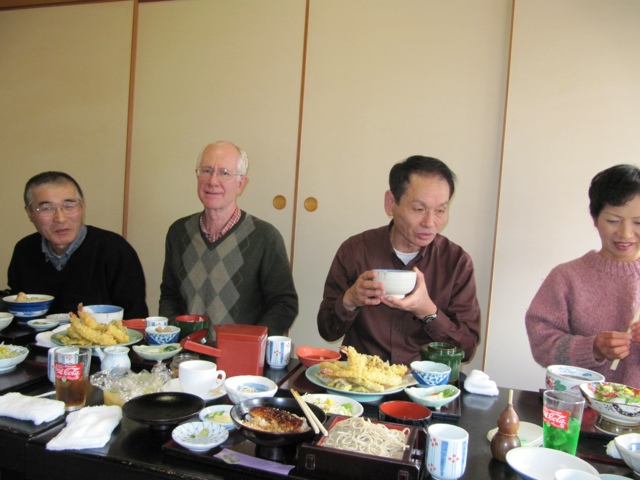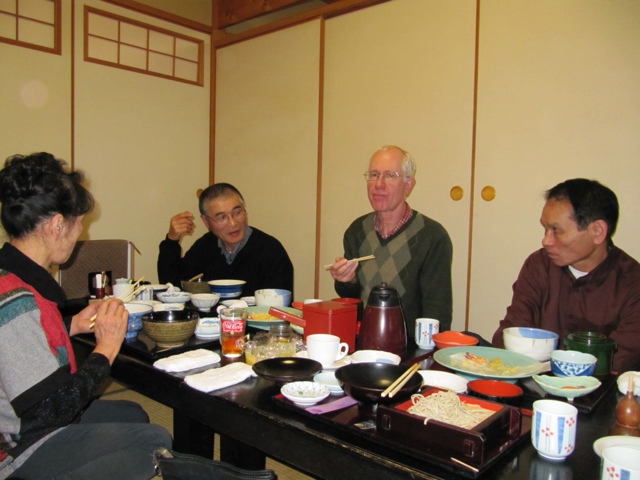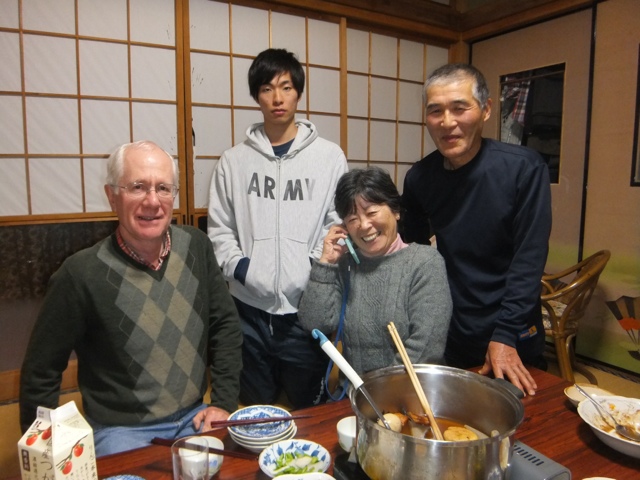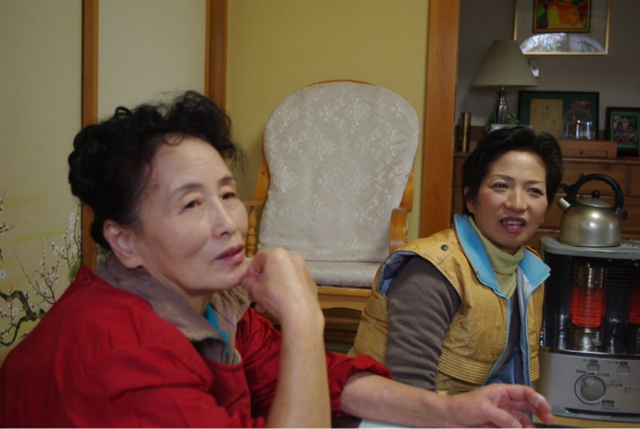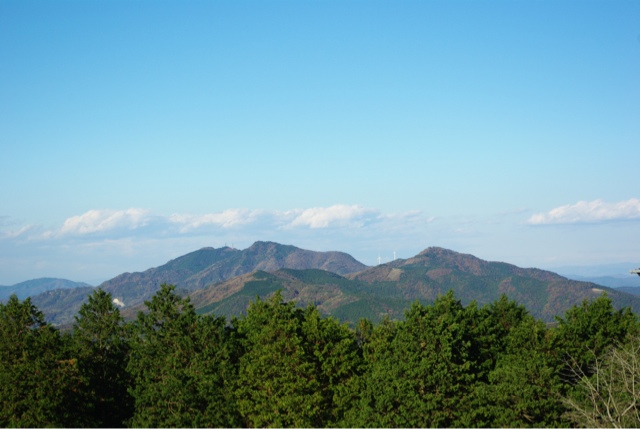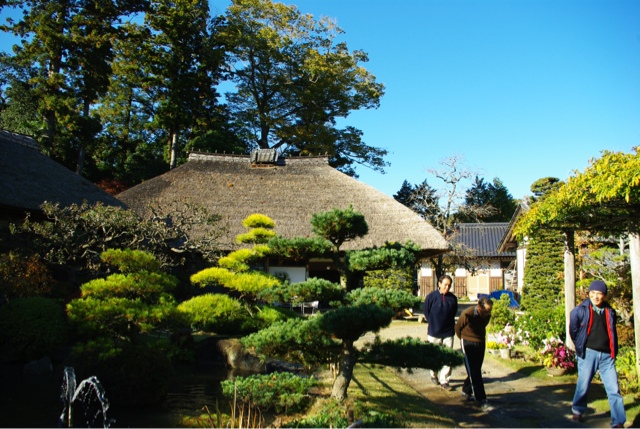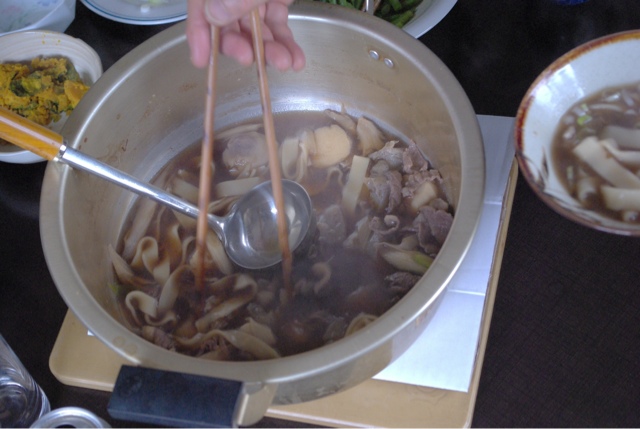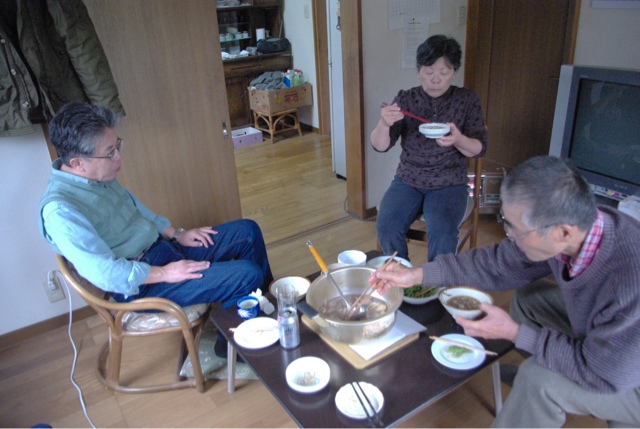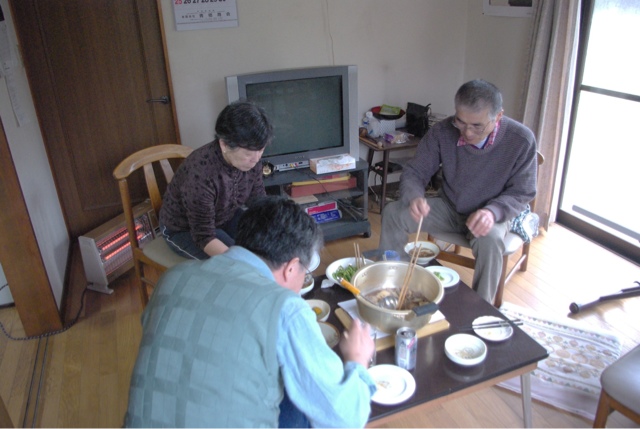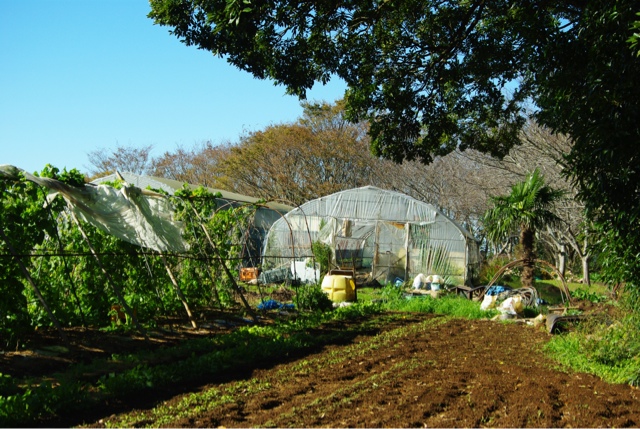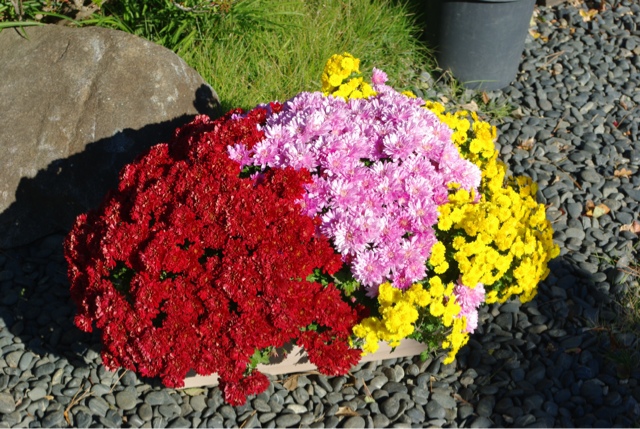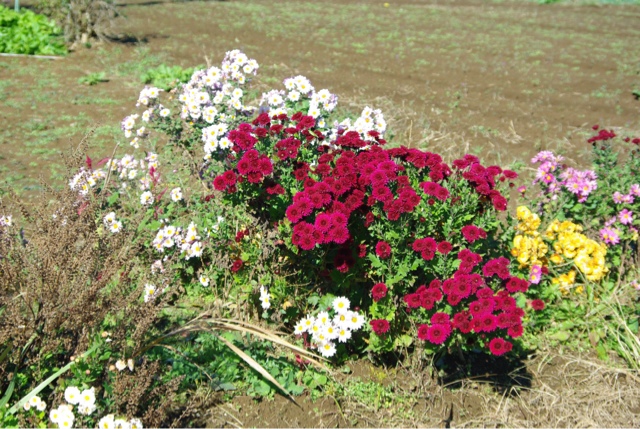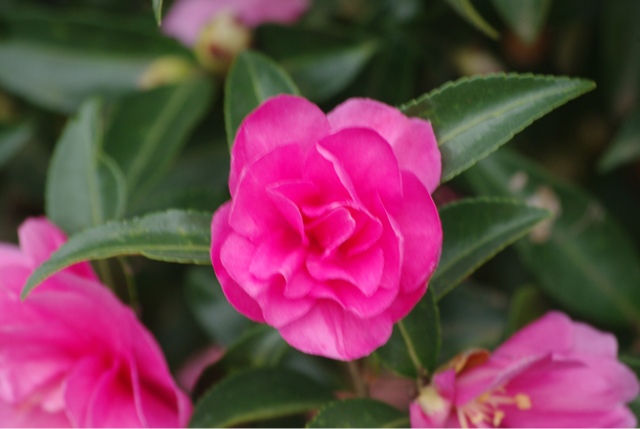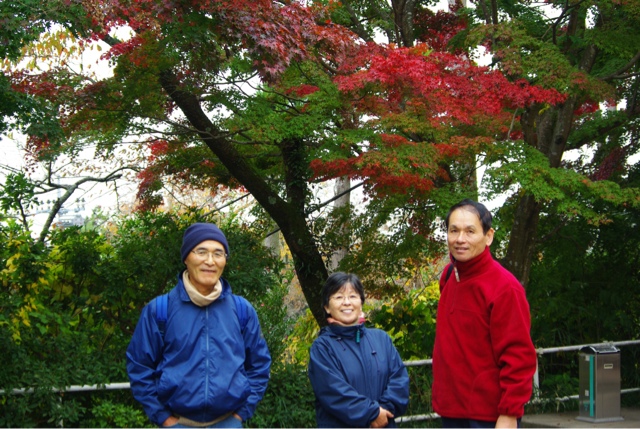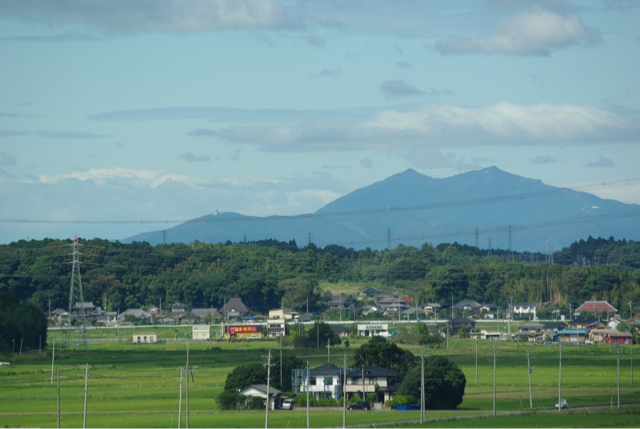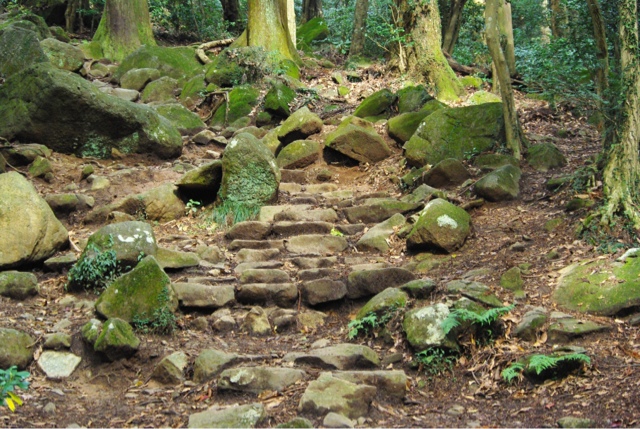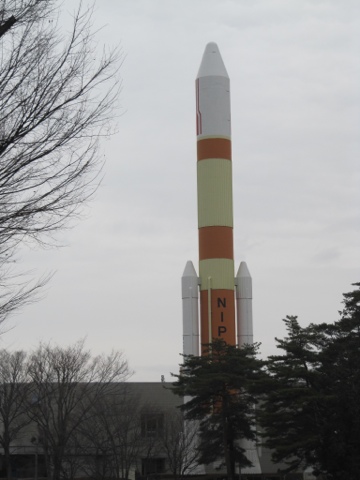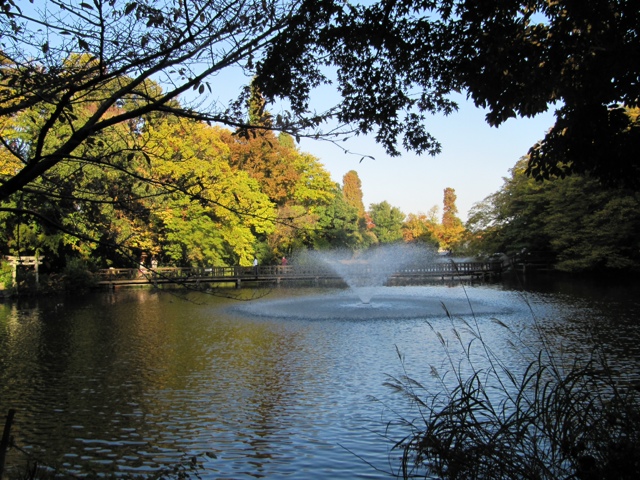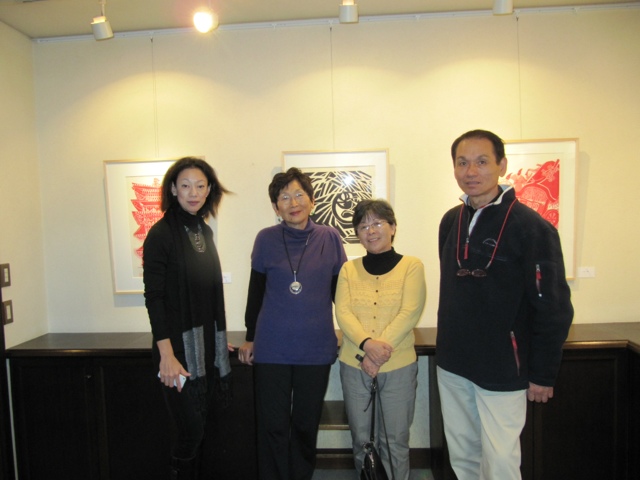This is an account of features of this country that either became apparent for the first time or were enhanced by exposure. Previous visits due to their brief nature and usually occurring in the month of May did not always reveal these impressions. Another factor that allowed us to learn much more about this country was our spending a substantial period of time in the countryside.
The Japanese climate varies remarkably from the Pacific Ocean side vs the Japan Sea side. The Pacific Ocean side has a warm current flowing from the south which ameliorates the climate. This prevents significant snowfalls except further north, for example, the Shiretoko area of Hokkaido is impacted by a cold iceberg carrying current from the Sea of Okhotsk. The Japan Sea side has violent ocean waves in the winter and heavy snowfalls inland.
Japan has incredibly beautiful mountains from snow covered peaks including Fuji-san revered by all Japanese to green cryptomeria (sugi) tree covered mountains. When asked what I would like to bring back to Canada, I answered a bamboo forest. One must experience the feathery fronds of such a biosphere with fast growing shoots towering up over ten meters and about ten centimeters in diameter. It is surrounded by variably coloured oceans from azure blue to emerald green punctuated with rocks jutting along the shore line.
We stayed here from December 2011 to December 2012 and were greeted by seasonal flowers throughout this period. Much of the flora is familiar, but many beautiful flowers both indigenous and introduced were quite novel to our eyes. We endured or enjoyed the fauna ranging from the incessant symphonies of the "semi" or cicada for month after month, enormous praying mantis, unusual grasshoppers, gorgeous butterflies, meter long snakes, lizards and frogs both tiny tree frogs and enormous hand sized frogs (sounding like members of the bovine species). One insect that practically speaking is 'over rated' is the mosquito. Unusual given its black colouration, it had little impact on our quality of life.
Dangers that threaten this country every day include earthquakes, tsunami, typhoon, tornadoes and volcanic eruptions. Fortunately we have not been negatively impacted by them. We have witnessed the daily volcanic eruptions of Sakurajima and have felt multiple earthquakes in the aftermath of the March 2011 earthquake.
Wednesday 19 December 2012
Monday 10 December 2012
Japanese Freeways
The Japanese countryside is punctuated with countless concrete pillars on top of which automobile or train traffic travels day and night. The concrete pillars are quite substantial possibly to better withstand earthquakes. But what is more unusual is that the freeways are frequently above ground level even in rural areas. Why I ask? One reason we were given is that earlier attempts at freeway construction resulted in undesirable wildlife carnage. I suspect another reason is noise suppression.
The reason I have an interest in the freeways is that one is being built right through the plateau we were living on in Komatsuka and permanently cut through and destroyed a convenient walkway across the countryside. The digging of the clay plateau is being done by large power shovels as seen in the photograph. I would expect to see bulldozers performing some of this work, but in Japan power shovels exist in many sizes from the monsters seen here to tiny ones whose shovel is equivalent to a few hand shovels worth. Even our host Okano-san has one that is co-owned by a handful of other people. Another boys toy like the ubiquitous brush whacker seen everywhere in rural areas.
The freeways are toll roads and are easily traversed when your vehicle has an Electronic Toll Charge or ETC transponder system that automatically debits you as you drive through the exit gates. They are quite expensive, but some system needs to pay for the expense of building and maintaining the roadways, including damage by earthquakes.
The reason I have an interest in the freeways is that one is being built right through the plateau we were living on in Komatsuka and permanently cut through and destroyed a convenient walkway across the countryside. The digging of the clay plateau is being done by large power shovels as seen in the photograph. I would expect to see bulldozers performing some of this work, but in Japan power shovels exist in many sizes from the monsters seen here to tiny ones whose shovel is equivalent to a few hand shovels worth. Even our host Okano-san has one that is co-owned by a handful of other people. Another boys toy like the ubiquitous brush whacker seen everywhere in rural areas.
The freeways are toll roads and are easily traversed when your vehicle has an Electronic Toll Charge or ETC transponder system that automatically debits you as you drive through the exit gates. They are quite expensive, but some system needs to pay for the expense of building and maintaining the roadways, including damage by earthquakes.
Thursday 6 December 2012
Mans Best Friend
We came to Komatsuka in Ibaraki prefecture in early March 2012 where we were greeted by our hosts and a small dog chained up near the house we would be living with. Much later we found out that all dogs were being chained up due to some unfortunate incident between a child and a dog. No one seemed to be walking the dog so eventually we asked Okano-san whether I could walk Muku the dog. We went for walks morning and late afternoon. This provided me with an excuse to wander all over the village as well as explore the countryside and a neighbouring residential area as well.
Muku is a very well behaved dog. He is incapable of barking possibly due to his quarter husky heritage. He typically ignores other dogs, but usually expresses some interest in female dogs (typical male). I have only heard him growling maybe two or three times and these occurred in more recent times. This supports my contention that dogs personalities reflect their owners and more recently I had begun to behave more aggressively to other dogs barking/growling at us. Any owner of a dog that attacks people should be locked up and the dog retrained. The reason I was more aggressive is that in Minamigaoka the neighbouring residential area a dog whose chain was too long came charging through the hedge and without much warning puts its muzzle around Muku's so that Muku could not breathe. What if that had been a toddler on the receiving end?
Muku is a very intelligent dog with an incredible nose able to detect delicacies such as dried up crayfish many meters away. Usually I chose the route, but later we came to intersections where I let him chose. Normally he avoided looking directly at me, but on those occasions he would glance at me to make sure things were okay.
Thanks to Muku I was able to learn and see many things in the area we lived in.
But in the last few weeks before we left Japan December 2, 2012 Muku started to lose his health. He did not eat much, he seemed to have some difficulty climbing slopes and was not as enthusiastic as previously. He is twelve years old and may be nearing the end of his life. Thank you Muku for sharing your village with me.
Muku is a very well behaved dog. He is incapable of barking possibly due to his quarter husky heritage. He typically ignores other dogs, but usually expresses some interest in female dogs (typical male). I have only heard him growling maybe two or three times and these occurred in more recent times. This supports my contention that dogs personalities reflect their owners and more recently I had begun to behave more aggressively to other dogs barking/growling at us. Any owner of a dog that attacks people should be locked up and the dog retrained. The reason I was more aggressive is that in Minamigaoka the neighbouring residential area a dog whose chain was too long came charging through the hedge and without much warning puts its muzzle around Muku's so that Muku could not breathe. What if that had been a toddler on the receiving end?
Muku is a very intelligent dog with an incredible nose able to detect delicacies such as dried up crayfish many meters away. Usually I chose the route, but later we came to intersections where I let him chose. Normally he avoided looking directly at me, but on those occasions he would glance at me to make sure things were okay.
Thanks to Muku I was able to learn and see many things in the area we lived in.
But in the last few weeks before we left Japan December 2, 2012 Muku started to lose his health. He did not eat much, he seemed to have some difficulty climbing slopes and was not as enthusiastic as previously. He is twelve years old and may be nearing the end of his life. Thank you Muku for sharing your village with me.
Sayonara Japan
I had begun to convince myself that southern Ibaraki and especially Chiba prefectures were the warmest parts of 'mainland' Japan to be living in. But as the weekend of December 1st and 2nd, 2012, arrived we were greeted by at least the third heavy frost on the roofs and ground. But this time there was also 4-5mm of ice on puddles. Oh, well, we might as well get ready to greet our home in Winnipeg (Winterpeg).
We have had so many warm expressions of welcome and invitations to continue living in this part of Japan! It is extremely flattering. We took Akio-san, Shigeko-san, Yoko-san, Kenji-san and Etsuko-san for lunch on Saturday in a traditional Japanese restaurant. It was a good time. Yoko-san added some life to the party. Kenji-san has been getting ready to go with other teachers and students to Okinawa for a school excursion. We have seen so much of Japan, but Okinawa is very high on our future list of priorities.
Back at Komatsuka village the Okano's invited us to join them for dinner that evening. Oh, well, we just won't be able to eat everything we still have in our place. It was a very nice dinner as usual. Our hosts have been overwhelmingly nice since we first arrived early March of 2012. We have been encouraging them to come to Canada. Seeing farms in Canada would be very interesting for Akio-san, but winter is intimidating, although I keep telling him that with his circulatory system he could probably handle winter better than we can. The farmers in this village all tend to have excellent circulatory systems and probably seldom have cold hands.
One more sleep some more cleanup and laundry and off we go to Narita "kuko" or airport with Shigeko-san driving her hybrid Toyota Aqua and Akio-san as well to say their farewells at the airport. On the way Kenji-san phoned from Okinawa, Yoko-san and another person phoned from Komatsuka to say good bye.
We suggested they just drop us off, but they refused. Akio-san helped us get our luggage in, while Shigeko-san parked at some 'distant parking lot'. We had coffee together, took a few photographs in front of a huge Christmas tree and then the final hugs. Japanese people don't hug, but we have had a few hugs.
We are going to miss the many very nice people we have met!
We have had so many warm expressions of welcome and invitations to continue living in this part of Japan! It is extremely flattering. We took Akio-san, Shigeko-san, Yoko-san, Kenji-san and Etsuko-san for lunch on Saturday in a traditional Japanese restaurant. It was a good time. Yoko-san added some life to the party. Kenji-san has been getting ready to go with other teachers and students to Okinawa for a school excursion. We have seen so much of Japan, but Okinawa is very high on our future list of priorities.
Back at Komatsuka village the Okano's invited us to join them for dinner that evening. Oh, well, we just won't be able to eat everything we still have in our place. It was a very nice dinner as usual. Our hosts have been overwhelmingly nice since we first arrived early March of 2012. We have been encouraging them to come to Canada. Seeing farms in Canada would be very interesting for Akio-san, but winter is intimidating, although I keep telling him that with his circulatory system he could probably handle winter better than we can. The farmers in this village all tend to have excellent circulatory systems and probably seldom have cold hands.
One more sleep some more cleanup and laundry and off we go to Narita "kuko" or airport with Shigeko-san driving her hybrid Toyota Aqua and Akio-san as well to say their farewells at the airport. On the way Kenji-san phoned from Okinawa, Yoko-san and another person phoned from Komatsuka to say good bye.
We suggested they just drop us off, but they refused. Akio-san helped us get our luggage in, while Shigeko-san parked at some 'distant parking lot'. We had coffee together, took a few photographs in front of a huge Christmas tree and then the final hugs. Japanese people don't hug, but we have had a few hugs.
We are going to miss the many very nice people we have met!
Tuesday 27 November 2012
Japanese Hospitality
We have encountered countless examples of hospitality in this country. Invariably gracious and always accompanied by delicious snacks and meals. Two examples pictured here are our Komatsuka hosts Shigeko-san and Akio-san, but another incredible hostess must also be mentioned. She is Kenji-san's sister Etsuko-san who invited the Okano's, another Okano-sensei and ourselves on November 23, 2012 for "omochi" or pounded rice lunch. She teaches cooking and Kenji-san says she enjoys hosting guests and it seems she never sits still enough to have her photograph taken, but we managed to capture her.
Kenji-san entertained some of us be performIng 'magic'. He took soybeans that had been well soaked and converted them to fresh tofu and a residue that can be used to make 'vegi' burgers.
The guest Okano-sensei who we met for the first time is another incredible person. He is an avid fisherman and makes lures from shells. This skill evolved into the creation of shell jewelry which we were able to see at 'Cloud Nine' in Tsukuba City. He is a horticulture expert like Kenji-san. He enjoys horseback riding and does dancing/acting on stage dramatizing traditional Japanese tales.
Click on link to see photographs on Picasa.
Japanese Hospitality
Kenji-san entertained some of us be performIng 'magic'. He took soybeans that had been well soaked and converted them to fresh tofu and a residue that can be used to make 'vegi' burgers.
The guest Okano-sensei who we met for the first time is another incredible person. He is an avid fisherman and makes lures from shells. This skill evolved into the creation of shell jewelry which we were able to see at 'Cloud Nine' in Tsukuba City. He is a horticulture expert like Kenji-san. He enjoys horseback riding and does dancing/acting on stage dramatizing traditional Japanese tales.
Click on link to see photographs on Picasa.
Japanese Hospitality
Tsukubasan Views
We have been living in the village of Komatsuka which is part of the Kanto plain, a large reasonably flat area including Tokyo. We have a view of Tsukuba Mountain from Komatsuka, but Tsukubasan hides the mountain ranges behind it to the west and north. Seeing these mountains forces one to realize that Ibaraki prefecture is not as flat as we have believed based on where we live.
We drove up the mountain near Tsukubasan on November 20, 2012 and were able to glimpse Kasumigaura (lake) and Tokyo Skytree. The latter tends to replace Tokyo Tower as the must see place of Tokyo. The area around Tsukubasan is called Ishioka-shi.
Of course we had to go to 'Cloud Nine' in Tsukuba Science City for coffee/tea etcetera after such a wonderful day.
Click on link to see photographs on Picasa.
Tsukubasan Views
We drove up the mountain near Tsukubasan on November 20, 2012 and were able to glimpse Kasumigaura (lake) and Tokyo Skytree. The latter tends to replace Tokyo Tower as the must see place of Tokyo. The area around Tsukubasan is called Ishioka-shi.
Of course we had to go to 'Cloud Nine' in Tsukuba Science City for coffee/tea etcetera after such a wonderful day.
Click on link to see photographs on Picasa.
Tsukubasan Views
Thatched Roof Home in Yasatomachi
There are still a significant number of thatched roof houses in the Yasato area. The one we visited November 20, 2012 is still in the family after more than 200 years. The "Ojiichan" or grandpa who gave us permission to see the place was quite proud of his family home. There are eight layers of thatch in the roof which can be distinguished by the variable colours. The traditional Japanese garden in the front includes natural water from the mountains flowing into the pond. There is a splendid view of terraced "tanbo" or rice fields and "yama" or mountains through the traditional front gateway. "Otoosan" or father and "Okaasan" or mother were busy in the tanbo cutting down the second growth of rice with 'brush wackers'. "Obaachan" or grandma was out in the "hatake" or field working with the vegetables. Trust Kenjisan to get permission to pick the last two "kaki" or persimmons growing near Obaachan.
Click on link to see photographs on Picasa.
Thatched Roof Home
Click on link to see photographs on Picasa.
Thatched Roof Home
Minedera Saikoin in Ishiokashi
On November 20, 2012 Kenji-san showed up at breakfast time and took Okano-san, Yayoi-chan and myself off to see Ibaraki prefecture tourist attractions.
Minedera Saikoin is a temple in Yasato-machi in Ibaraki-ken which is often called the Kiyomizudera of the Kanto area. The reason is that it is a resemblance to the Kiyomizudera temple in Kyoto with beams and posts supporting the structure over a steep hill.
This is an ancient temple with a magnificent view of the plain below. Most tourists probably come here for the view of the Kanto hei (plain) on the edge of mountains. Even with the haze in the air often seen in Japan it is nevertheless a remarkable vista.
After we went to a grocery store and each of the four of us picked up an obento lunch of our choice and went to a grassy park to enjoy our lunches.
Click on link to see photographs on Picasa.
Minedera Saikoin
Minedera Saikoin is a temple in Yasato-machi in Ibaraki-ken which is often called the Kiyomizudera of the Kanto area. The reason is that it is a resemblance to the Kiyomizudera temple in Kyoto with beams and posts supporting the structure over a steep hill.
This is an ancient temple with a magnificent view of the plain below. Most tourists probably come here for the view of the Kanto hei (plain) on the edge of mountains. Even with the haze in the air often seen in Japan it is nevertheless a remarkable vista.
After we went to a grocery store and each of the four of us picked up an obento lunch of our choice and went to a grassy park to enjoy our lunches.
Click on link to see photographs on Picasa.
Minedera Saikoin
Imonikai at Komatsuka
Earlier we attended an Imonikai in the Tokyo area of former residents of Yamagata prefecture where Yayoi grew up. On November 19, 2012 Shinomiya Masao showed up with the fixings for another Imonikai. The weather was not cooperating so Yayoi cooked the satoimo and other vegetables inside. What a delicious soup it turned out to be! Okano-san was able to join us for lunch and he and Masao-kun had a good chat.
Sunday 18 November 2012
Paradise
It was cool in the house this morning at about 11°C, but after taking Muku for a walk or rather him taking me for a walk, I went out to the 'hatake' or field and began to pick green beans or 'ingen'. Then the word entered my consciousness. These people live in paradise.
I was out in shirt sleeves on November 18, 2012, the sun was shining from a clear sky and a cool breeze was blowing. Click, click as my "hasami" scissors cut bean after bean until the large basket was overflowing. The climbing bean vines can be seen on the left in the photograph of the greenhouse. What a beautiful day! The chrysanthemums are blooming everywhere and such a variety of them can be seen in southern Ibaraki prefecture. The citrus fruits are ripening, the persimmons are firm and sweet. The gardens produce food the year round. Why live anywhere else?
A phone call and we are invited to lunch at Kenji-san's sister Etsuko-san. Shigeko-san is kind enough to drive with us and a wonderful lunch and pleasant conversation awaits. After the afternoon as we drive home at dusk (5pm) Shigeko-san points out Fuji-san (mountain) in the distance to the south-awesome. A fitting end to a fabulous day!
I was out in shirt sleeves on November 18, 2012, the sun was shining from a clear sky and a cool breeze was blowing. Click, click as my "hasami" scissors cut bean after bean until the large basket was overflowing. The climbing bean vines can be seen on the left in the photograph of the greenhouse. What a beautiful day! The chrysanthemums are blooming everywhere and such a variety of them can be seen in southern Ibaraki prefecture. The citrus fruits are ripening, the persimmons are firm and sweet. The gardens produce food the year round. Why live anywhere else?
A phone call and we are invited to lunch at Kenji-san's sister Etsuko-san. Shigeko-san is kind enough to drive with us and a wonderful lunch and pleasant conversation awaits. After the afternoon as we drive home at dusk (5pm) Shigeko-san points out Fuji-san (mountain) in the distance to the south-awesome. A fitting end to a fabulous day!
Saturday 17 November 2012
Momiji or Japanese Maple
The Momiji is a Japanese symbol, in my mind, as memorable as Fuji-san or sakura ( cherry blossoms). It is a good thing we chose to take the cable car (train) down Tsukuba-san as the pedestrian route had nothing like the brilliant display of the journey down the mountain by train and especially the terminal station at the bottom. It was a fitting end to a lovely weekend. Thank you Kenji-san and the Okano-sans.
Click on link to see photographs on Picasa.
Momiji or Japanese Maple
Click on link to see photographs on Picasa.
Momiji or Japanese Maple
Tsukubasan or Mount Tsukuba
Everyone in Japan would like to be able to say that they climbed Fuji-san. Yayoi mentioned to Kenji-san that she would like to see/climb Tsukuba-san so he arranged that Akio and Shigeko Okano would join us on November 13, 2012 and at about 8:30am Shigeko-san drove five of us to the tourist village at the base of the mountain.
The mountain itself is higher than Tokyo Skytree and is a bit of an anomaly in the Kanto plain. From Komatsuka where we live it is the only mountain we can routinely see. The city of Tsukuba is on the far side of the mountain relative to Komatsuka or the west side.
It took us about three hours to make the climb on a very rocky (sometimes slippery) pathway. At one spot we had to pass beneath a rock precariously jammed in a large crevasse that looked as though a nudge would send it toppling down on some hapless victim. But thanks to a Japanese hero by the name of Benkei (companion to Yoshitsune) living in the 1100's who hesitated seven times before passing under the rock making conditions safe for subsequent pedestrians.
At another area spotted people throwing small stones up at a mouth like opening created by two rocks about 3 meters above the ground. The existing pile of small stones prevented new stones from finding a resting spot. I decided to give it a try and my stone arced over the pile of stones and embedded itself in the throat of the structure. Then I am told that this means I will become rich. Well I am holding my breathe!
I taught Kenji-san two new English expressions. On a long ride children will ask their parents 'Are we there yet?'. I then suggested that a better expression is 'Are we having fun yet?', which was more appropriate to our circumstances as no one seemed to know how far the summit was so we might as well enjoy the journey.
We met many people including very young children on the climb. We asked one old man coming back down how much further? As part of his reply he told us he climbed up and back every day.
We decided even before reaching the summit that we would take the cable car train back down. Going down an incline is always more difficult than climbing and the rain would have made the rocks treacherously slippery.
We had a delicious lunch at the top provided by Kenji-san's and Akio-san's knapsacks carried laboriously up the mountain. Then we bought 'train' tickets to go down a beautiful autumn scenery route surrounded by Japanese maples conspicuously absent on the trek uphill.
Click on link to see photographs on Picasa.
Tsukuba Mountain
The mountain itself is higher than Tokyo Skytree and is a bit of an anomaly in the Kanto plain. From Komatsuka where we live it is the only mountain we can routinely see. The city of Tsukuba is on the far side of the mountain relative to Komatsuka or the west side.
It took us about three hours to make the climb on a very rocky (sometimes slippery) pathway. At one spot we had to pass beneath a rock precariously jammed in a large crevasse that looked as though a nudge would send it toppling down on some hapless victim. But thanks to a Japanese hero by the name of Benkei (companion to Yoshitsune) living in the 1100's who hesitated seven times before passing under the rock making conditions safe for subsequent pedestrians.
At another area spotted people throwing small stones up at a mouth like opening created by two rocks about 3 meters above the ground. The existing pile of small stones prevented new stones from finding a resting spot. I decided to give it a try and my stone arced over the pile of stones and embedded itself in the throat of the structure. Then I am told that this means I will become rich. Well I am holding my breathe!
I taught Kenji-san two new English expressions. On a long ride children will ask their parents 'Are we there yet?'. I then suggested that a better expression is 'Are we having fun yet?', which was more appropriate to our circumstances as no one seemed to know how far the summit was so we might as well enjoy the journey.
We met many people including very young children on the climb. We asked one old man coming back down how much further? As part of his reply he told us he climbed up and back every day.
We decided even before reaching the summit that we would take the cable car train back down. Going down an incline is always more difficult than climbing and the rain would have made the rocks treacherously slippery.
We had a delicious lunch at the top provided by Kenji-san's and Akio-san's knapsacks carried laboriously up the mountain. Then we bought 'train' tickets to go down a beautiful autumn scenery route surrounded by Japanese maples conspicuously absent on the trek uphill.
Click on link to see photographs on Picasa.
Tsukuba Mountain
Tsukuba Science City
Tsukuba is a city with a university of course and many agencies dedicated to science research. It is home to JAXA or the Japan Aerospace Exploration Agency. The headquarters of the Asian space program is also headquartered here. The city of Sapporo in Hokkaido is more non-Japanese in appearance than many cities, but Tsukuba was built from plans so that streets tend to be laid out more like a North American city and unlike Sapporo is built on flat land.
Cities such as Tokyo are essentially an amalgamation of a number of villages without any overall plan and apparently very few restrictions as to how things must be built. This results in a very erratic street pattern. Navigating some intersections can be a mind stretching exercise.
Tsukuba has a large conference centre and when we had breakfast on November 13, 2012 in the Okura Hotel near Kenji-san's as well as John Delp's mansion many "hakujin" or Caucasian people came in to have breakfast. Of course John approached the table next to us and asked 'So where are you folks from?'. The answer was Canada. Apparently most of the people having breakfast were all from Canada for some sort of science conference.
Click on link to see photographs on Picasa.
Tsukuba Science City
Cities such as Tokyo are essentially an amalgamation of a number of villages without any overall plan and apparently very few restrictions as to how things must be built. This results in a very erratic street pattern. Navigating some intersections can be a mind stretching exercise.
Tsukuba has a large conference centre and when we had breakfast on November 13, 2012 in the Okura Hotel near Kenji-san's as well as John Delp's mansion many "hakujin" or Caucasian people came in to have breakfast. Of course John approached the table next to us and asked 'So where are you folks from?'. The answer was Canada. Apparently most of the people having breakfast were all from Canada for some sort of science conference.
Click on link to see photographs on Picasa.
Tsukuba Science City
Woodblock Prints and Kichijoji
On November 12, 2012 Kenji-san and we took the Tsukuba express train to Tokyo to see a Japanese artist's woodblock prints. Her name is Naoko Matsubara and in the photograph she is second from the left. She currently lives in Toronto, Ontario, Canada and is visiting Japan. Then after viewing, chatting, drinking tea, Matsubara-san accompanied us to a small restaurant near the station where we had a delicious lunch.
After we went with Kenji-san to Kichijoji where we spent some time in the L.L. Bean store where Kenji-san purchased pants. After we had tea and carrot cake at Rose Bakery. Then we spent some time in the park nearby and did a little browsing in the typical Japanese style shopping street leading to the park. The park is unique in that Inokashira pond which it surrounds is created entirely by spring fed water which has been running for more than 500 years.
Click on link to see photographs on Picasa.
Woodblock Prints and Kichijoji
After we went with Kenji-san to Kichijoji where we spent some time in the L.L. Bean store where Kenji-san purchased pants. After we had tea and carrot cake at Rose Bakery. Then we spent some time in the park nearby and did a little browsing in the typical Japanese style shopping street leading to the park. The park is unique in that Inokashira pond which it surrounds is created entirely by spring fed water which has been running for more than 500 years.
Click on link to see photographs on Picasa.
Woodblock Prints and Kichijoji
Subscribe to:
Posts (Atom)
